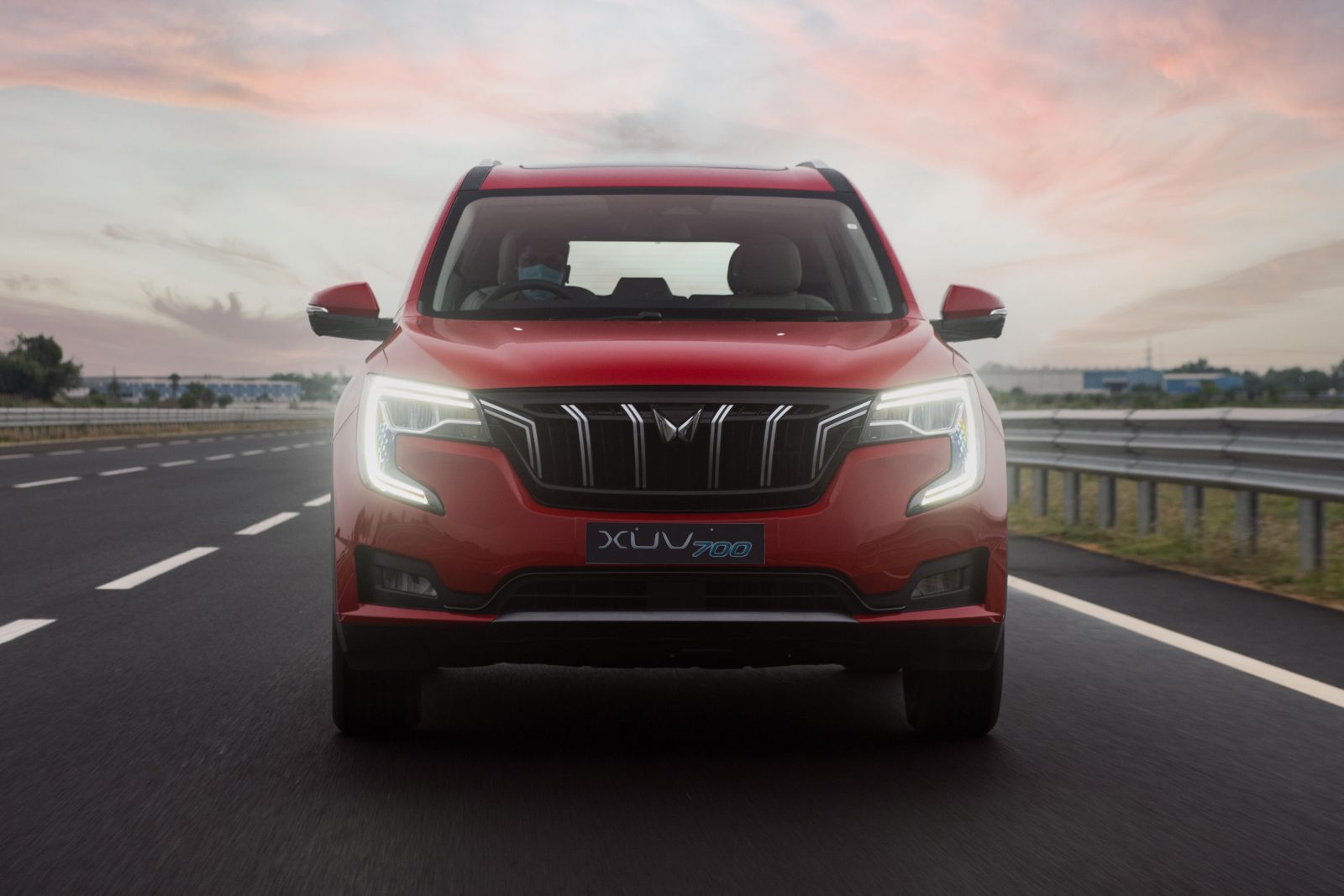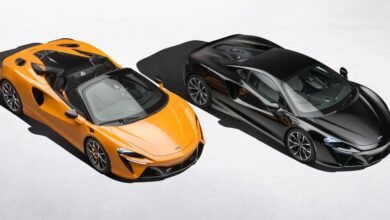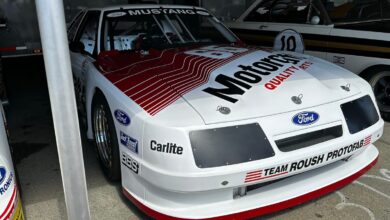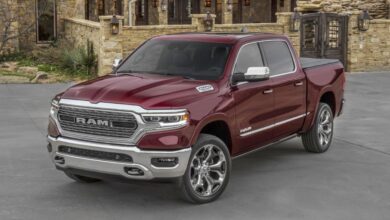2023 Mahindra XUV700 review | CarExpert
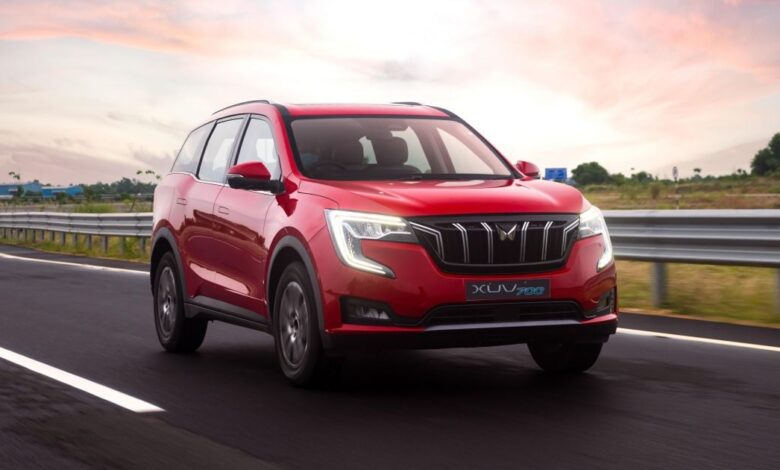
The Mahindra XUV700 – pronounced ‘X-U-V-seven-double-oh’ – is an important model for the Indian giant’s urban push, set to launch in Australia later this month.
Even though the mid-size unibody XUV700 is following the launch of the large body-on-frame Scorpio in Australia, it’s technically older and was originally introduced in the Indian market in 2021. Its local launch was delayed due to supply chain woes.
Dubbed as the successor to the XUV500, the XUV700 will be available at launch in two high-spec seven-seat variants called AX7 and AX7L. Both will be powered by a turbo-petrol engine with front-wheel drive.
At this stage final Australian pricing and specifications are yet to be confirmed.
Unlike the Scorpio, the XUV700 comes as standard with a range of active safety features including autonomous emergency braking (AEB), lane-keep assist, and adaptive cruise control among others.
Ahead of the Mahindra XUV700’s Australian launch on June 15, we got the chance for an early drive on Indian soil at the company’s expansive proving ground.
How will the XUV700 stack up in the fiercely competitive Medium SUV segment?
How much does the Mahindra XUV700 cost?
Australian pricing for the Mahindra XUV700 is still yet to be confirmed.
In the Indian market the XUV700 is slightly cheaper than the equivalent Scorpio, which is called the Scorpio-N there.
This potentially indicates the XUV700 could be priced under the Scorpio in Australia, which currently starts at $41,990 drive-away until June 30, 2023.
In terms of its competitors, there are a range of seven-seat medium SUVs including the Mitsubishi Outlander, Honda CR-V, Nissan X-Trail.
Key rival pricing:
- 2023 Mitsubishi Outlander LS seven-seat AWD: $43,240
- 2023 Honda CR-V VTi 7 FWD: $40,900 drive-away
- 2023 Nissan X-Trail ST seven-seat AWD: $39,790
All prices are before on-road costs, unless specified
Other competitors that are technically Large SUVs but are still worth mentioning include the Hyundai Santa Fe V6 FWD ($46,050), Mazda CX-8 G25 Sport ($42,060), and Volkswagen Tiguan Allspace 110TSI Life ($44,490).
What is the Mahindra XUV700 like on the inside?
Walking up to the Mahindra XUV700 you’ll be presented with door handles that look eerily similar to the Kia EV6. They pop out when you unlock the car and retract when it’s locked to help create a sleek side profile.
When you open the door you’ll get smacked in the face with the crisp white leatherette upholstery that will be the only choice in Australia. I doubt this will age well with kids climbing in and out of the car, plus the messes that inevitably come.
It’d be great to be able to have a darker upholstery option, as putting seat covers on all three rows of seating isn’t a feasible solution.
The driver’s seats is really comfortable with plenty of support and six ways of electric adjustability. The way you interact with these controls are mounted high on the door panel, like a number of Mercedes-Benz models.
The seats thankfully have perforations which is well received on sweltering days, but a notable feature omission that some Australians will miss are heated front seats. Virtually every single top-spec medium SUV on sale in Australia has this feature.
In terms of interior touch points, the majority of them are soft. You don’t have to look far to find harder plastics though. There’s plenty of piano black on the centre tunnel, as well as faux wood panelling on the doors.
The steering wheel is a rather chunky unit that appears to be the same as the Scorpio. Our Indian-spec tester only had tilt adjustment which is a little disappointing as you can’t get your seating position exactly right.
The Mercedes-Benz-like nature of the XUV700’s interior continues with the standard dual 10.25-inch screens for the digital instrument cluster and touchscreen infotainment system.
The digital instrument cluster looks flashy and high resolution upon first glance but once you start digging into it you realise it offers similar functionality as a small TFT screen between analogue dials, with only content in the middle able to cycled through a few different informative pages.
There is a Blind-Spot View Monitor on the flagship AX7L variant, like a number of high-spec Hyundai and Kia models, that shows a live feed from a camera mounted underneath the side mirror when you put on the indicator.
This is a great safety feature to have although the camera’s frame rate can be a little bit jumpy at some points.
Moving across to the touchscreen infotainment system it’s just as high resolution as the digital instrument cluster.
I would’ve loved more of an opportunity to dig into how well the XUV700’s touchscreen functions but my time behind the wheel was limited. From what I did experience though, there were no dropouts, glitches or awkward interactions.
There’s also a BMW-like rotary controller on the centre tunnel that can be used either changing the volume or for cycling through content.
Moving to the second row, I was quite surprised with how much space there is. The amount of knee and foot room is fantastic for adults. Kids will have even more space.
Headroom is also great given the panoramic glass sunroof that will be standard across the Australian XUV700 range.
I spent the majority of my time with the XUV700 in the second row as I was shuttled to various locations in India in one. I didn’t get cramped at any point whatsoever.
Despite the second row being fixed in place, it has a recline function which can help gives passengers in the third row more or less space. There’s also a handle on the front passenger seat which allows rear passengers to move it forward or back.
In terms of second-row amenities, there are air vents and a singular USB-C port.
Like a few medium SUVs on sale in Australia, the XUV700 will come as standard with a third row of seating. There are two seats in the third row but they are so small I didn’t even attempt to try and get back there. It’s definitely a kids-only space.
It’s safe to say the XUV700 has a 5+2 seating configuration rather than a proper six- or seven seater with enough space for adults in the third row – as is the case with rivals.
Mahindra hasn’t quoted boot capacities for the XUV700, though just like the Scorpio it was virtually nothing with all three rows upright.
Unlike the Scorpio though, the XUV700’s third row folds away to create a flat boot floor. There’s actually a fair bit of usable space when the third row of seats are folded too.
Thankfully the XUV700 comes with a full-size steel spare wheel, which is a great and critical feature for many rural and regional buyers.
What’s under the bonnet?
At launch the entire Mahindra XUV700 range will be powered by a 2.0-litre turbocharged four-cylinder petrol engine producing 149kW of power and 380Nm of torque.
This is mated to an Aisin-sourced six-speed automatic transmission with drive sent exclusively to the front wheels.
In other markets there’s a 2.2-litre turbo-diesel engine, which is the same as the Scorpio, as well as a manual transmission and all-wheel drive.
Claimed fuel consumption is 8.3 litres per 100km according to ADR combined testing. It has a 60-litre fuel tank.
How does the Mahindra XUV700 drive?
Hopping into and switching on the Mahindra XUV700, I subconsciously expected to hear a diesel clatter but quickly remembered the Australian-spec range will be petrol-only.
There is a turbo-diesel engine available in the XUV700 in other markets with all-wheel drive, but it won’t be making the trip Down Under at launch. Mahindra Automotive Australia is well aware of its existence though.
With the four-cylinder turbo-petrol’s outputs of 149kW of power and 380Nm of torque, there’s enough power to get you moving with traffic.
If you punch it, which I was directed do numerous times during our hour-long test drive at the Mahindra SUV Proving Track (MSPT), you’ll definitely get somewhere but it won’t be at a neck-breaking pace.
The XUV700’s Aisin-sourced six-speed transmission is tried and tested, with gear changes feeling silky smooth. It’s obviously tuned for comfort though and can be a little bit lazy when asked to kick down a gear, however.
Although I didn’t get a heap of time driving the XUV700 at low speeds, I noticed the car is surprisingly agile and nimble. This is likely due in part to the lack of all-wheel drive which typically adds extra weight.
In addition, the XUV700 has really light steering which makes it easy to change directions in low-speed situations. A downside of this though is the steering lacks a little bit of feedback.
One of the best attributes of the XUV700 is its suspension setup, which consists of McPherson strut front and multi-link rear suspension, with the company’s so-called Frequency Selective Dampers.
This suspension technology, which is also present in the Scorpio, means the car can remain composed over a singular speed bump with high damping force, but can also have a comfortable ride on bumpier roads with low damping force.
We got to test out how the suspension reacts over various different surfaces at MSPT, with it tackling it all with no problems at all. I was particularly surprised with how well the XUV700 handled rougher bitumen sections because although you could hear what was going on, you barely felt it.
I’m really looking forward to testing the XUV700 out on more familiar soil to see how it deals with pimply and pot-holed Australian roads.
Dialling up the speed in the XUV700 makes everything quite a bit louder, but once you reach a cruising speed the engine finds a comfortable groove.
During my time with XUV700 I got the opportunity to cut a few flying laps on the High Speed Track at MSPT. This 4km-long elliptical track features two parabolic 880m curves that have a maximum inclination of 43 degrees.
The track has four lanes, with the outer lane having a speed limit of 180 km/h. My last name is Quick so you can bet that I spent the majority of my time testing the upper limit of this threshold given I had the opportunity to do so.
When travelling over 160 km/h in the XUV700, which is considerably higher than legal highway speeds in Australia, the car throws up an “overspeed” warning. There’s also absolutely heaps of wind noise too.
Although I understand this is well beyond what the majority of people will subject their XUV700 to, it’s worth noting I was doing all of this in 42-degree heat and 80 per cent humidity. The car’s engine temperature gauge never tipped over the middle point.
On the safety front, the Mahindra XUV700 is fully loaded. Unlike the larger Scorpio, the car comes with a range of advanced driver assistance systems (ADAS) including autonomous emergency braking (AEB), lane-keep assist, Smart Pilot Assist, adaptive cruise control, traffic sign recognition, and automatic high-beam.
Even though I didn’t get the chance to test active safety features out in the real world, I noticed the lane-keep assist was quite strong and largely accurate. I’m really curious to see how it tackles faded lane markings locally though.
What do you get?
Australian specifications for the Mahindra XUV700 are still being finalised, but New Zealand-delivered examples receive the following:
XUV700 AX7 highlights:
- 18-inch diamond-cut alloy wheels
- Automatic LED headlights
- Automatic high-beam
- LED daytime running lights
- Fog lights with cornering function
- Rain-sensing wipers
- Panoramic sunroof
- Flush door handles
- Power-folding side mirrors
- 10.25-inch digital instrument cluster
- 10.25-inch touchscreen infotainment system
- Intelli Command Control dial
- 6-speaker sound system
- Apple CarPlay, Android Auto
- Dual-zone climate control
- Push-button start
- Leather-wrapped steering wheel
- Leather-wrapped shifter
- Passenger seat Ergo lever
- White leatherette upholstery
- 6-way power driver’s seat with memory
- 6 airbags
- Autonomous emergency braking (AEB)
- Forward collision warning
- Lane departure warning
- Lane-keep assist
- Traffic sign recognition
- Adaptive cruise control
- Rear-view camera
- Tyre-pressure monitoring
XUV700 AX7L adds:
- Electric smart door handles
- Sony 12-speaker sound system
- Wireless phone charger
- Electric park brake
- Telescopic steering adjustment
- Vanity mirror illumination
- Knee airbag
- Blind-Spot View Monitor
- Stop-and-Go function in adaptive cruise control
- Continuous video recording
Is the Mahindra XUV700 safe?
The Mahindra XUV700 hasn’t been tested by ANCAP or Euro NCAP yet, but it scored a five-star rating according to the lenient Global New Car Assessment (GNCAP) protocols in 2021.
Unlike the Scorpio, Australian-specification XUV700 variants come standard with an advance driver assistance systems (ADAS) suite including the likes of autonomous emergency braking (AEB), lane-keep assist, and adaptive cruise control.
Standard features in New Zealand include:
- 6 airbags
- Autonomous emergency braking (AEB)
- Forward collision warning
- Lane departure warning
- Lane-keep assist
- Smart Pilot Assist
- Adaptive cruise control
- Rear-view camera
- Traffic sign recognition
- Tyre pressure monitoring
The flagship AX7L adds a driver’s knee airbag, Blind-Spot View Monitor, and a surround-view camera.
How much does the Mahindra XUV700 cost to run?
Although Mahindra hasn’t confirmed yet, it’s expected the XUV700 will be covered by the brand’s new seven-year, 150,000km warranty.
There’s also seven years of roadside assistance.
Mahindra Automotive Australia hasn’t detailed service pricing as yet.
CarExpert’s Take on the Mahindra XUV700
The Mahindra XUV700 is another surprising, yet slightly forgettable vehicle from the Indian giant in its push to attract more urban buyers Down Under.
This seven-seat unibody medium SUV has an absolute bucket load of competition and really needs to stand out for Australian buyers to even consider it. Getting people to say the car’s name correctly will be only one of many hurdles for Mahindra Automotive Australia.
Despite being pretty fully-loaded there are a few sticking points, including the lack of a diesel and all-wheel drive option at launch, as well as being stuck with white leatherette upholstery in a family-oriented SUV.
I do commend Mahindra in giving all Australian-bound XUV700 variants a standard driver assistance suite that includes autonomous emergency braking (AEB), lane-keep assist, and adaptive cruise control. It can’t come to the body-on-frame Scorpio soon enough.
Given we don’t know pricing yet and we haven’t driven the car on Australian soil, I’ll have to withhold full judgement of the XUV700 until then.
What I will say though, is if Mahindra Automotive Australia can get the pricing of the XUV700 just right, then it could definitely be an appealing alternative to established competition.
Click the images for the full gallery










